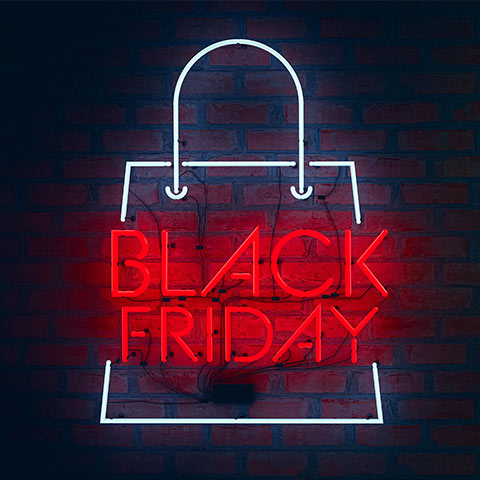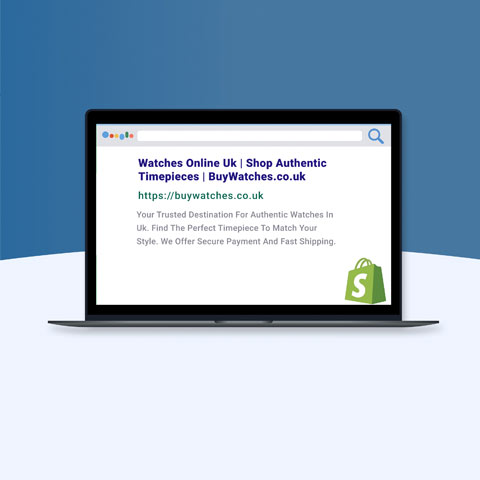Understanding and Mapping the Retail Customer Journey


Your customer’s journey is seldom linear. In fact, most customer journeys span multiple channels and touchpoints before they purchase.
Retail is a highly competitive industry, so it’s important you acknowledge and target your customers’ interactions before, during and after their purchase. To understand your customers’ journey and to encourage them to convert, you can create a customer journey map. Mapping the retail customer journey can give your business a complete overview of all the touch points between your brand and your customers, and how to optimise them, to ensure you’re meeting their needs.
In this blog, we’ll explain how you can go about mapping your retail customer journey and how a customer journey map can benefit both your business and customers.
What is a customer journey map?
From an outsider’s perspective, a customer’s journey may seem simple - a business sells a product and the customer buys it. But customer journeys are far more complex than that, often taking several customer touchpoints for a customer to convert. In fact, on average it takes eight touchpoints to close a sale. That’s where a retail customer journey map can help you.
A customer journey map is a visual representation of the customer (or buyer) journey covering every engagement your customer has with your brand, service or product. The customer journey in retail is one of the multiple touchpoints, from how they first heard of your brand to the direct interactions they have with your sales or social team. Having a customer journey map in place can help you to understand your customers’ behaviours so you can ensure you’re meeting their needs and expectations.
The journey map covers all the actions your customer takes to complete an objective, such as following you on Instagram, visiting a store or making a purchase. This visual storyline can offer you valuable insight into your customers’ thought processes, so you can target and engage with them at every step of their journey.
What are the steps in the retail customer journey?
The customer journey is no longer a straight line and is much more complex than ever before. In fact, the multitude of touch points available to customers creates diverging paths, with customers move back and forth along their journey depending on their unique circumstances. Typically, the retail customer journey tends to follow five stages, with a number of touchpoints in each stage.
Remember, your role is to acknowledge the customer touchpoints where you will meet your customers as they go through these stages. You’ll be taking control of each touchpoint at every stage of the journey
Here, we’ll uncover the five stages that make up the customer journey:
1. Awareness
During this first stage, the customer becomes aware of the ‘problem’ they’re looking to solve. This ‘problem’ may be a want or need for a particular product or service, and their goal is to alleviate the problem or find a solution to it. With this being the first stage of their journey, customers tend to spend a lot of time researching to see what options are available to them. They might ask friends for recommendations or go online to browse what’s out there.
As a business, the Awareness stage gives you the chance to engage with your customer and make them aware of your product or service, and how it can help them.
2. Consideration
The next stage in the retail customer journey is known as Consideration. At this stage, the customer will have completed their initial research and defined what their problem is. Now, they’ll be looking to solve their problem and compare their options against each other to decide which best meets their needs. At this stage, you’ll have your customer’s attention but will need to show them how your product or service can help them, so they choose you over your competitors.
3. Decision
As the name suggests, this is the stage where your customer has decided on their solution to their problem and is now ready to buy. They’ll now compare products or services from different businesses to decide which suits them best. At this point, it’s important that the checkout process is as easy and straightforward as possible, so your customer isn’t deterred at the last minute. This is true for the customer journey both in-store and online.
4. Retention/Loyalty
So, your customer has made their initial purchase with you. Now, you’ll need to put the work in so they come back for more. Once the customer is satisfied with their purchase and the ‘problem’ is recurring, they’ll enter the loyalty or retention phase of the retail customer journey. Try to regularly re-engage with your customers and reward them for their loyalty so they return to your business in the future. Personalised messaging, promotional codes and a rewards scheme can help you to maintain a strong connection.
5. Advocacy
The final stage of the retail customer journey, and perhaps the most important stage, is Advocacy. By this stage you’ve not just earned a loyal customer, but one who will advocate for your brand by recommending it to their network. Advocacy is often underestimated and can be a key contributor to your business growth. Key touchpoints in this stage include online customer communities where your customers can interact with other advocates, referral programmes and in-person events where they can engage with your brand directly.
Remember, each of the above stages includes several individual touchpoints where you’ll meet your customers. With the help of your customer journey map, you’ll take ownership of each touchpoint at every stage of their journey.
What is the process of mapping the retail customer journey?
While your customer journey map will be unique to your business, there are some key areas that are often included:
- The customer journey/buying process: As mentioned, there are five stages to the customer journey, which you can use to chart your customer’s path from their first interaction with your brand, to their last.
- Pain points: Why are your customers looking for your product/service? There’s usually a pain point that’s causing their problem. Adding these pain points to your customer journey map can help you identify how your customer is feeling at each stage and the reasons why, for you to empathise with their situation.
- Customer emotions: It’s important to acknowledge your customers’ emotions at each stage of their journey. After all, they’re looking at your product/service to help them solve a problem, so it’s likely they’re feeling a certain way such as frustrated or confused. Including these emotions in your retail customer journey map can help you identify these emotions and find ways to alleviate them.
- Solutions: Once you’ve identified the problems your customers are facing, you’ll need to find ways to mitigate them. These solutions can improve your buying process so customers face fewer problems during their customer journey, which can improve their overall customer experience.
Finding your customer touchpoints
Customer touchpoints are any circumstance where your customer makes contact with or forms an opinion of your business. These touchpoints can be anything from a direct interaction with an employee, a social media ad or even a customer review. Here are just some potential customer touchpoints to consider:
- Online or print advertisements
- Blog posts
- Landing pages
- Social media
- Product reviews
- TV advertisements
- Product launch events
But how do you find your customer touchpoints? The first step is to fully identify with your customer - put yourself in their shoes. Ask yourself where you’d turn to if you had a problem that needed solving. You could also ask your customers questions through a survey to make sure what you perceive as their experience is accurate.
Once you have a list of potential touchpoints, you can map your customer’s journey from pre-sale to post-sale, to analyse their entire customer experience. Customer journey maps can help you to analyse your customers’ behaviour across touchpoints to see the path they take when interacting with your business.
Remember, your brand exists beyond your website and marketing materials. Perhaps a customer heard of your brand through a friend’s recommendation, for example - a touchpoint you might not have direct control over. Make sure you consider the different types of touchpoints in your customer journey map to identify opportunities for improvement across your business.
How to map the retail customer journey for your business
We’ve explored the steps in the retail customer journey and how to find your customers’ touchpoints. Now you’re ready to map the retail customer journey for your business. Here, we’ll explain step-by-step how to create your customer journey map:
- Set your goals and objectives: Before you get started on the map itself, you’ll need to establish clear and measurable goals. What are you looking to achieve from the customer journey map? If you don’t already have them in place, now is the time to create buyer personas - fictional customers that represent your potential buyers. By having an idea of the customer you’re targeting, you can direct your customer map towards them.
- Persona research: Gather as much information as possible about the persona your customer journey map is geared towards. Get customer feedback through questionnaires or interviews from real customers or prospects, so you can really get to know them. From there, you’ll have data that really reflects the values of your customers.
- Find your customer touchpoints: You should now have a list of the touchpoints your customers are using, which can give you insight into how your customers are interacting with your brand. Remember to include information about the emotions and challenges related to each touchpoint.
- Actions and motivations: Make a list of your customers’ actions when interacting with your brand, such as opening an email or ‘liking’ your social media post. Then try to identify the emotions or motivations a customer has with each action they make. Your customers’ emotions are likely to vary depending on which stage of their journey they’re at. Knowing what actions your customers are taking at each stage of their journey, and how they’re feeling during them, can help you to provide the right content at the right time.
- Look at your resources: Do you have the resources you need to offer the best customer experience? Your customer journey map offers a complete picture of your business and how your resource is being used to help your customers. You can use the map to assess which touchpoints need focusing on, and if you need to invest more resources to meet your goals.
- Analysis: Analysis is an important part of creating a customer journey map. Look at your data and which areas need more support. You should be able to spot which areas aren’t meeting customers’ needs and decide on methods to improve them. Take the customer journey yourself and see if anything is missing so you can provide the best customer experience possible.
- Make changes: Now you have a visualisation of what the customer journey looks like, you can make the necessary changes to make your business what you want it to be. The customer journey map should offer insight into the needs of your customers at each point of their journey, so you’ll know what changes need to be made to address their pain points. To test which changes work best, you can try A/B testing to see which variation your customers respond to best.
How Apteco can help you track your customers
Say goodbye to complicated dashboards by harnessing the power of your customer data with Apteco. Their data visualisations make it easy to understand your audience stats, so you can make data-led decisions that drive conversions, increase sales and improve your customer experience. Apteco software can give you a complete picture of your customer data, so you can map the retail customer journey with ease.
Check out how they can support your retail business, and when you’re ready book a demo today to get started.
Want more like this?
Want more like this?
Insight delivered to your inbox
Keep up to date with our free email. Hand picked whitepapers and posts from our blog, as well as exclusive videos and webinar invitations keep our Users one step ahead.
By clicking 'SIGN UP', you agree to our Terms of Use and Privacy Policy


By clicking 'SIGN UP', you agree to our Terms of Use and Privacy Policy
Other content you may be interested in
Categories
Categories

Want more like this?


Want more like this?
Insight delivered to your inbox
Keep up to date with our free email. Hand picked whitepapers and posts from our blog, as well as exclusive videos and webinar invitations keep our Users one step ahead.
By clicking 'SIGN UP', you agree to our Terms of Use and Privacy Policy






![[Research] Apps: The Secret Engine of Ecommerce Growth [Research] Apps: The Secret Engine of Ecommerce Growth](https://images.bizibl.com/sites/default/files/apps-and-web-similarweb-480.jpg)


